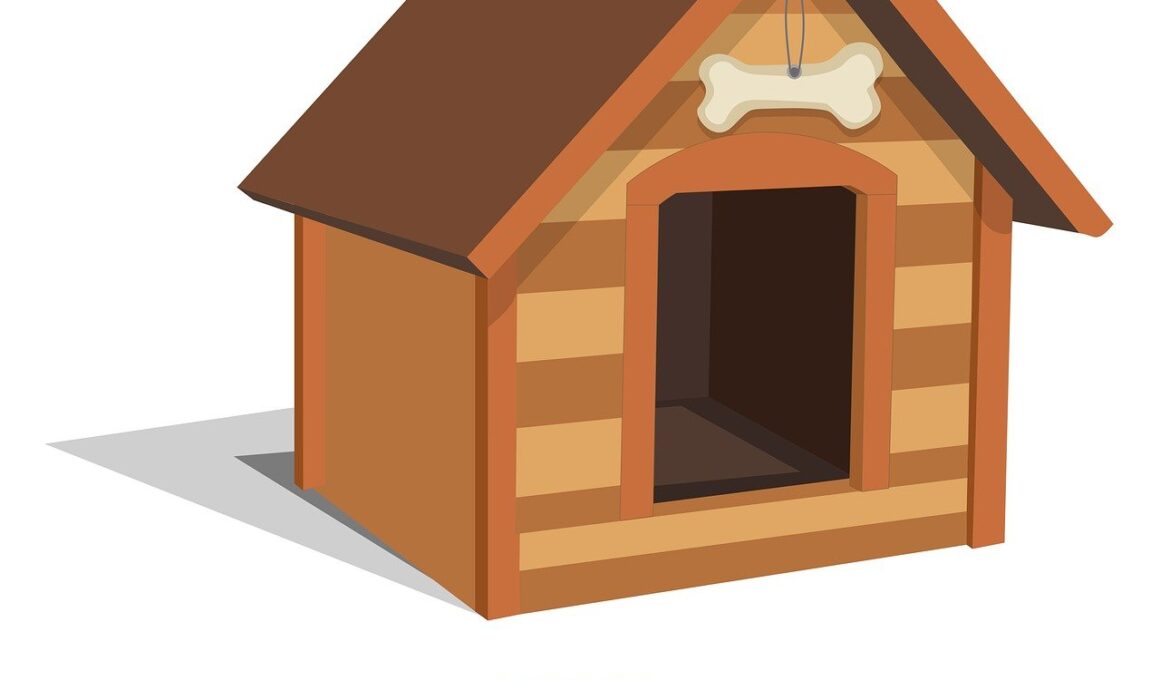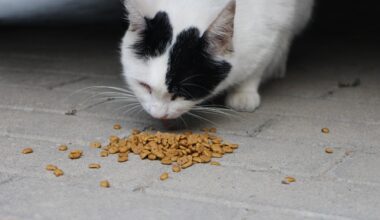How Proper Ventilation Extends the Lifespan of Your Dog House
For dog owners, ensuring that your pet has a comfortable living environment is essential. Proper ventilation in a dog house helps regulate temperature, preventing overheating and moisture accumulation. This means your dog will stay cooler during hot months and warmer in colder ones. Maintaining an ideal climate can also reduce the risk of respiratory issues, as stale air can harbor bacteria and allergens. Ideally, ventilation systems allow fresh air to circulate freely, which contributes significantly to your dog’s overall health. Proper airflow can also help eliminate odors and reduce the prevalence of pests, such as insects. Furthermore, improper ventilation can compromise the structural integrity of the dog house, leading to mold growth and potential damage. Roof ventilation options such as vents or insulated roofs will lead to better airflow. Additionally, consider installing windows with screens to allow for cross-breezes when needed. Dog houses that utilize good ventilation are generally easier to maintain, resulting in less time and effort spent cleaning. Overall, proper ventilation enhances not only your dog’s comfort but also prolongs the lifespan of the dog house itself, making it a worthy investment.
One of the foremost benefits of proper ventilation is temperature control within the dog house. When dogs are enclosed in tightly sealed spaces, they can quickly overheat, especially during summer months. The risks of heatstroke are significant and should not be ignored. Maintaining a well-ventilated dog house can help mitigate these risks and keep your furry friend comfortable. The right ventilation helps to dissipate heat, allowing cooler air to flow in. Additionally, ensuring that your dog has adequate airflow can prevent humidity buildup. Excessive dampness in a dog house can lead to discomfort for your pet and can facilitate the growth of mold and mildew. As such, one should regularly inspect ventilation openings to ensure they are free from obstructions. Better airflow also promotes the drying of excess moisture that can accumulate from rain or snow. Regular maintenance involves cleaning vents, ensuring screens are intact, and checking for obstructions. Another crucial aspect includes the choice of materials used in the dog house. Select materials that have insulating properties that complement the ventilation features.
Health Benefits of Adequate Ventilation
A well-ventilated dog house significantly boosts your pet’s health, contributing to a safer living space. Poor ventilation can lead to respiratory problems, especially in breeds prone to such issues. Stagnant air creates a breeding ground for spores and bacteria, which could potentially harm your pet. By maintaining consistent air circulation, you can vastly improve the air quality which aids in maintaining your dog’s health. Proper ventilation aids in reducing allergens housed within the dog house. Dog dander, dust, and pollen can accumulate if ventilation is not properly managed. A consistent flow of fresh air helps to clear these allergens, promoting better health for you and your dog. Furthermore, fresh air enriches the environment, providing a sense of well-being for your pet. It directly impacts your dog’s mood and energy levels by offering a less stressful setting. Clean, breathable air can also enhance your dog’s coat condition, making it lush and healthy. Ensuring such an environment could lead to a happier, more playful pet, improving the quality of its life effectively. Implementing proper ventilation principles ultimately promotes an overall healthier and happier dog.
The design of a dog house plays an important role in its ventilation capabilities. If you’re building or choosing a dog house, consider designs that incorporate natural airflow features. Ensure that doors, windows, and vents are strategically placed to promote circulation without compromising your pet’s safety. Well-designed vents will also be out of reach of your dog, preventing unnecessary access to the outside elements. Placement near the roof will capture rising heat, thus effectively releasing it. Proper positioning of ventilation holes will create a cross-breeze, maximizing airflow throughout the entire structure. Additionally, prefer angled roofs which allow for heat to escape rapidly. Ventilation should also be adjustable; allowing you to control airflow during different seasons is a key feature. During warmer months, open vents wider, while securely closing them during cold months can maintain warmth. Utilizing mesh screening can allow airflow while keeping pests outside. Furthermore, consider using building materials that offer insulating benefits, such as wood. Adequate insulation paired with ventilation maintains a balanced internal environment, ensuring your dog enjoys comfort. Plan ahead during the construction phase; investing in these features will pay off immensely in the comfort of your beloved pet.
Maintenance Tips for Your Dog House
Maintaining a dog house involves ensuring proper ventilation systems continue to function effectively. Regular inspections are crucial. Check vents and air holes to ensure they remain clear and unblocked. Use a soft brush or cloth to clean dust and dirt build-up on these structures. Any mesh screens should be checked for rips or tears and replaced to prevent unwanted pests from entering. In addition, monitor the integrity of any windows or doors to ensure they remain sealed properly. Regular checks will extend the life of your dog house while offering peace of mind. Additionally, clean the dog house periodically to remove any mess while avoiding unpleasant odors. Regular cleaning will increase your pet’s comfort and help maintain ventilation channels. As the seasons change, adapt your ventilation methods to fit the varying weather conditions; close vents during harsh winters while keeping them open during summers. Install removable insulation as necessary. Moreover, keep an eye on your dog’s behavioral changes—if they show signs of distress or discomfort, it may indicate a need for better airflow. Simple actions today will ensure the longevity of the dog house and ultimately safeguard your furry friend’s health.
Another aspect of dog house ventilation involves utilizing the environment surrounding the house effectively. Planting trees or installing fences can create natural shade, thereby reducing heat build-up in the dog house. Additionally, raising the dog house off the ground allows for enhanced airflow beneath, which is beneficial during hot weather. Consider positioning the dog house away from extreme temperature fluctuations, turning it to face away from harsh winds or towards cooler breezes. Always consult local weather patterns to understand common climate conditions throughout the year. In colder terrains, you can insulate your dog house while adding proper ventilation systems to maintain a comfortable temperature. Utilize windbreaks to shield against strong winds. If you live in a particularly warm area, installing additional vents might be necessary for optimal airflow. Utilize colors that reflect sunlight when painting the dog house to further aid in temperature regulation. These elements serve not only to improve your pet’s comfort but can also promote the longevity of your dog house significantly. Well-considered placements and environmental factors will allow you to create an inviting, healthy habitat for your furry companion.
Conclusion on Ventilation Practices for Dog Houses
Proper ventilation in a dog house is essential for your pet’s overall health and comfort. It serves multifaceted purposes, creating a breathable, safe environment while extending the dog house’s durability. Through implementing effective ventilation techniques, you provide health benefits, controlling air quality, moisture, and temperature. An adequately ventilated dog home will keep your dog feeling comfortable year-round while reducing the risk of potential downtime due to illness. Remember, the goal is to create a sustainable environment, making your dog house a haven for your pet. Using knowledge about airflow, design optimization, and proper maintenance, you ensure your canine companion lives a long, happy, and healthy life. Optimal conditions can also promote a sense of security and well-being, which is essential for your pet’s mental health. Overall, take time to evaluate your current dog house situation, identifying any areas for improvement in ventilation. Create a detailed plan to implement the right features and maintenance routines, allowing you to enjoy peace of mind regarding your dog’s living conditions. Adhering to these principles will significantly enhance both your dog’s life and the longevity of the dog house.


